
This Week in Panels: Week 3
October 11th, 2009 Posted by GavokThis week begins with a lack of Amazing Spider-Man. That’s odd.

Batman and Robin #5
Grant Morrison and Phillip Tan
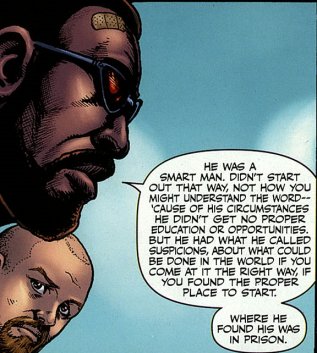
The Boys #35
Garth Ennis and Darick Robertson

This week begins with a lack of Amazing Spider-Man. That’s odd.

Batman and Robin #5
Grant Morrison and Phillip Tan

The Boys #35
Garth Ennis and Darick Robertson

Julian’s a buddy, and imagine my surprise when he sent this over.

That’s the cover art for Wale‘s new single Pretty Girls, featuring art by Julian. Wale’s a dope dude, and his Mixtape About Nothing was easily worthy of five mics.
Anyway, support Julian. He’s a good dude. Read Ants, and cop Wale’s Pretty Girls for 99 pennies.


Inio Asano’s Solanin is about a young girl stuck in that period of time where youthful dreams give way to cold reality. Meiko, the main character, is forced to confront that she may not grow up and get to be whatever she wants to be, and may have to take what she can get.
Meiko’s struggle and listlessness is very easy to relate to. Meiko is at a point in her life that I think most, if not all, of us go through. She’s graduated from college and is working a dead-end job that she doesn’t enjoy. She feels like her live-in boyfriend is freeloading, just a little, and while she’s not unhappy, she isn’t in a very good state of mind, either. She needs a change, but she doesn’t know which change or even how to figure that out. So, at the beginning of summer, she quits her job and decides to live off her savings for a while.
Her boyfriend and friends are similarly familiar. Her boyfriend is Naruo Taneda, and she simply calls Taneda most of the time. He’s accepted post-college life as something that’s endured. He goes to work at his freelance illustration job, accepts the crap hours, and deals with the crap pay.
Kato is a slacker, still fooling around in his sixth year of college. His girlfriend tolerates it, because she knows that adult life sucks. It’s boring and it’s long, so she might as well let him have his fun before she has to really crack the whip.
The word for Solanin is “melancholy.” Meiko’s thoughts are spelled out in a monologue over the course of most of the chapters, and she’s equal parts unsure and hopeful. When she finds something that can give her the get up and go that she needs, she embraces it, but even that isn’t enough, and she soon falls back into old habits.
The characters have embraced the idea of “it is what it is.” No one is particularly satisfied by their lot in life. Meiko struggles to find something to give life meaning, Taneda noodles around in his band, and Kato dreams about betraying his girlfriend. Rip, another of their friends, isn’t sure if he’s happy in his life, either, but he tries to make the best of it.
What’s interesting about Solanin is that since the majority of the cast is searching for ways to be happy, every smile is a worthwhile one. They take happiness where they can get it, whether it’s through dumb pranks or genuine breakthroughs. When Meiko watches Taneda and the band perform their new song, she smiles and says, “Yes. This is how it should be.”
Really, every emotion is earned. While there is one telegraphed and basically cliche twist partway through the book, the payoff for it is excellent. The scenes where the band performs are powerful and portrayed as raw emotion. The band’s rediscovering what they love, and through that, trying to find happiness.
Solanin is about coming to terms with real life. As kids, we are told and taught and assume that we’ll have these exciting lives where we own our own business, act in movies or plays, sing, write novels, or do something exciting for a living. In reality, though, most of us will spend our time working toward making someone else richer. Over the course of the book, Meiko learns that you have to take happiness where you can get it. A life of pure bliss doesn’t exist, it’s a child’s dream, and you have to grow out of a thirst for that before you can enjoy life as it should be.
There’s a powerful image toward the end of the book, of Meiko bent over, her head touching the ground. Nothing’s visible except for her figure collapsed on the ground. It’s one of my favorite images in the book, in part because of what it represents. She came to terms with what life is about and has finally decided what to do.
Solanin is very good. Maybe it’s because I’m around the same age as the cast of the book. I like to think that it’s because Solanin is very good in and of itself. It’s some 400 pages long, but I burned through it in a couple of sittings. I wish I’d read it last year when it came out. However, Asano has a couple more books coming out this month– What A Wonderful World! volumes one and two. I’m definitely going to check those out just because Solanin was so enjoyable.

-Emi Lenox of EmiTown creates one of my favorite online comics, and one of the few journal comics I’m willing to read on a regular basis. Her art is very endearing, and her point of view is always interesting. She did a comic in 24 hours in honor of 24 Hour Comic Day, and it’s a good one. Check out the comic here. It’s pretty awesome.
-Jason Thompson discusses Felipe Smith’s Peepo Choo, which looks like exactly the kind of manga I want to read. I may order Smith’s MBQ just off the strength of this feature.
-Chad Nevett, once again proving that my opinions are the best opinions, agrees with my unspoken opinion that the first half of Hancock was very good and interesting and that the second half goes completely off the rails. He’s got some good thoughts on the movie, and Hancock’s motivations.
-Jim Rugg and Brian Maruca are dropping an Afrodisiac book later this year. You have bad taste in comics if you don’t pick it up.
-Kate Dacey dropped her Manga Hall of Shame, a list of terrible books that she’s read. In what I hope is the first of many, Erica Friedman does her own list for yuri manga. I don’t know if I could make a list of my own. Maybe the Cowboy Bebop mangas, which were both amazingly not charming at all? The Gundam tie-in manga that Tokyopop put out when I was dumb enough to buy every manga on the shelves?
-Leylaaker (apologies if I missed a real name) writes about a pretty sour experience visiting comic shops on both coasts. Dear comic shops: get your acts together. Comic Shop Guy should be an aberration, not the norm.
-Ian from The Eastern Edge posts the final part of his six part Naoki Urasawa interview translation project. It’s a good read, and links to the previous installments are in the post.
-Brandon Graham’s blog is a must-read, though it’s sometimes NSFW. He renewed my eternal love in this post and with these words: “Where did that L7 square, space wingtip wearing motherfucker ever come up with the feet for that robot? Those feet were clearly designed by someone that regularly mastrerbates into a pair of 93 Reebocks.”
-Jog wrote a wrap-up of SPX 2009, and as usual, it’s must-reading. It ranges from a look at old Mazzucchelli art to panel recaps to books he picked up at the show.
-FBB did a podcast on Frank Miller and Dave Gibbons’s Martha Washington books. I haven’t listened to it yet, but black people.
–A brief bit of Richard Corben animation from 1968. NSFW, but guess what: it’s Richard Corben. Props to Sean Witzke for the link.
-Cheryl Lynn is reading a couple comics on recommendation from Ragnell and David Uzumeri. Which did they recommend? Tarot and Fantastic Four. Prologue is up, and part 2 covers Tarot.

When the topic of “feeling obligated to contribute to the critical discourse” came up during the SPX 2009 Critics’ Roundtable, I rolled my eyes a little. If you’re feeling obligated, you’re doing it wrong and you should probably chill out a little. However, discourse that occurs organically, out of respect for the work or the emotions it caused in you, is a great thing. It’s nothing you can force into being.
Two of my favorite bloggers are Tucker Stone and Matthew J Brady. Maybe it’s because we share sensibilities. Maybe it was that night we had to bury a body in Juarez. Whatever the reason, I tend to enjoy reading what these two guys come up with, even if I don’t agree.
Critical discourse is what happened when all three of us reviewed Pluto at different points in time, from different perspectives, and found different things to enjoy about it. Matthew recently posted a review that praises the emotional investment Urasawa instills in his readers by way of some well-executed facial expressions and pacing. Tucker juxtaposed it with the maturation of American comics, or rather the immaturatization, kind of like I did a while back. At the same time, I fell in love with the fact that one of the central conceits in the book, whether or not robots count as human, is a smokescreen, a purely surface level reading that is quickly proven to be a falsehood.
You can read Pluto’s first volume and get everything you need out of the series. It could be that robots can be people. It can be that Urasawa is a master artist. It can also be that Pluto approaches comics for adults in a way that American comics generally don’t. Compare the treatment of death in Blackest Night, DC’s All-Zombies All-Death All-the-time crossover and in Pluto 1-3. Look at which one treats death like it matters, and which treats death as overwrought melodrama. (Blackest Night is a bad crossover full of bad comics.)
All three of our takes are valid interpretations and all three are ripe for discussion. What’s nice is that I don’t think any of this came about because we felt like Someone Had To Discuss Pluto. We weren’t trying to prove that we’re real critics, or writers, or whatever, by contributing opinions because we felt like we had to. That’s a stupid and self-centered way to approach things. “I’m smart, smart people do this, so let me do this, too, to show that I am smart.”
Post-script: Tucker was right when he said that Pluto “is better than you heard it was.”

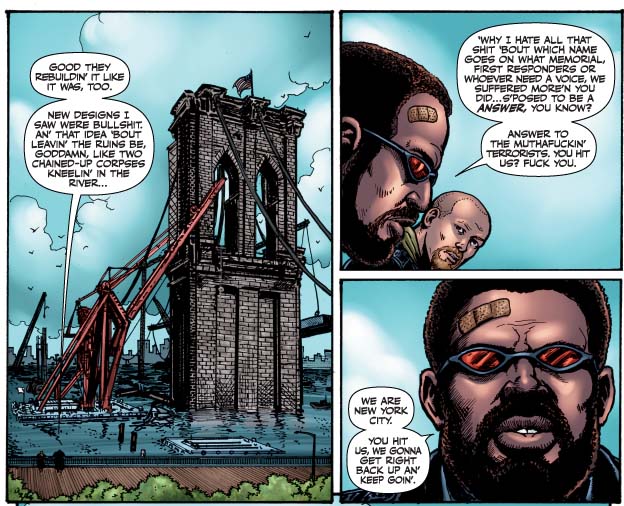
There was a sequence early in The Boys that’s stuck with me. Two pages from The Boys Vol. 2: Get Some:
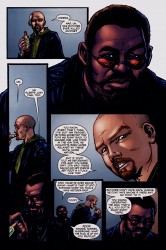
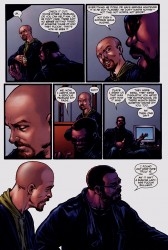
His line about hate not being “lazy-ass fuckin’ bullshit” is something that betrays a deeper story, and it looks like we’re getting it with the new arc of The Boys. CBR has a nsfw preview of The Boys #35, with this text:
Origins time. In the first of the two part “Nothing Like It In The World”, Mother’s Milk tells Hughie the story of his life to date- his upbringing in Harlem, the secret of his massive strength, the catastrophe that struck his family, and the unforgettable boxing championship disaster that led him to join The Boys.
His name is apt. I’ll just leave it at that.

6th Sense’s 4a.m. Instrumental provides a prelude to our latest Continuity Off: Adam Warlock vs Alfred. As in, Batman’s Alfred versus the Golden Messiah.
I break Warlock down from Kirby/Lee to Jim Starlin to the current incarnation, a feat which takes forever, and Esther explains how Alfred a) is 90 years old and b) was in love with a woman who could be his great grand-daughter and was also just a little older than Tim Drake. Whooo!

Back for another week of panels that give you a vague essence of the comics we have read this week without any real context. Let the non-reviews begin!
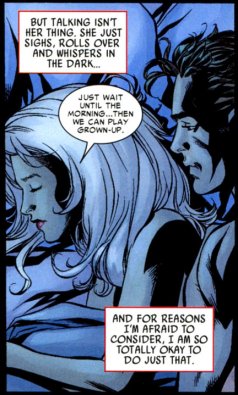
Amazing Spider-Man #607
Joe Kelly, Mike McKone and Adriana Melo
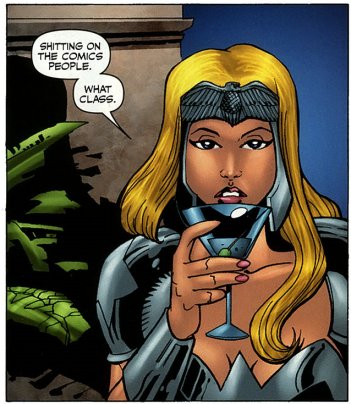
The Boys: Herogasm #5
Garth Ennis, John McCrea and Keith Burns

A few weeks ago, I looked over Dell’s Dracula. Due to the pressure to be a more wimpy, G-rated company back in the 60’s, Dell had to take its classic monster properties and reinvent them into a more superhero fare. Another one of these properties was The Wolfman, which received its own movie-to-comic adaptation in 1964.
When Dell made their attempt at superhero comics, they took the concept and made a series called Werewolf, which lasted for three issues. If it wasn’t for the name and the fact that it came out around the time of Dracula and Frankenstein, it would have fallen into even more obscurity. See, the Dell take on Dracula was still a guy from a European country who lived in a dark castle and could turn into a bat. Frankenstein was still a big, strong guy with a green face and flattop. Werewolf, meanwhile, has absolutely nothing to link him to being a werewolf.
When you hear “Werewolf”, you think of Warren Zevon songs, Michael J. Fox movies, Jon Talbain, superheroes by night, Jason Bateman sequels to Michael J. Fox movies, furries, Joe Estevez movies, nards, Rahne Sinclair, Sabrewulf, John Jameson, Adam Sandler covers of Warren Zevon songs, and that episode of Real Ghostbusters where vampires and werewolves started biting each other and becoming hybrids. That episode ruled. What you don’t think about is Noob Saibot punching out enemy soldiers alongside a wolf.
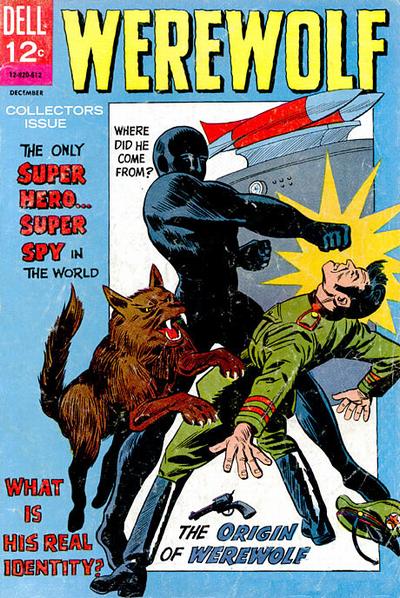
Again, there are no credits listed, but it’s assumed that the creative team was Don Segall and Tony Tallarico. At first I was disappointed in finding out that Werewolf is in no way monster related like its brother comics. Then I delved deeper into the title and discovered that it is balls-out insane. As you see on the cover, the guy is a super spy, which means we’re going to be getting all sorts of James Bond shit, only because it’s a comic book from the 60’s, it’s going to be absolutely ridiculous!